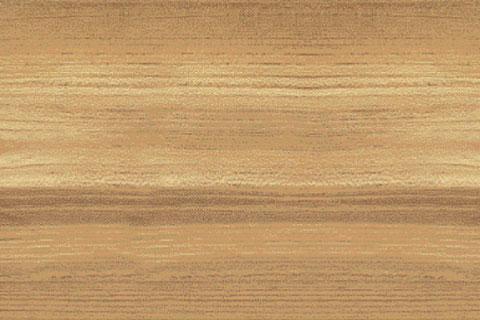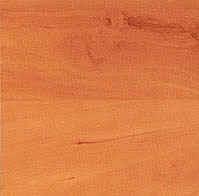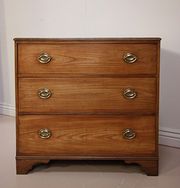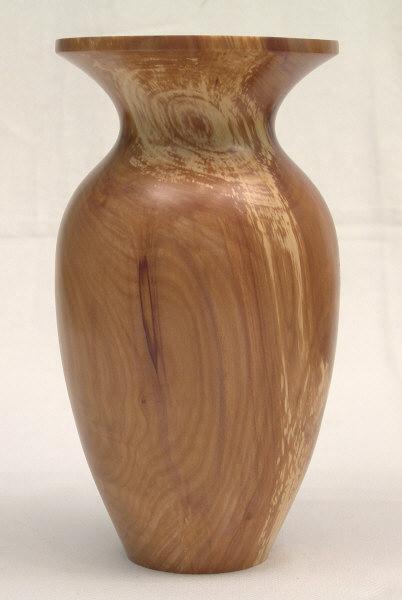Apple Wood Furniture – A Durable Choice
Media Gallery
Apple trees were common sources of wood for the immigrants who colonized North America. Today, apple wood is typically harvested from trees that have outgrown their usefulness as fruit producers.
Because the majority of today’s apple trees are dwarf varieties (they produce the same amount of fruit on a much smaller, more manageable tree), apple wood is not available in massive quantities. In addition, apple wood takes a long time to dry out enough to be useful for furniture, and has a tendency to warp and crack. This produces lumber that is relatively expensive, commanding $2+ more per board-foot than other fruit woods, such as cherry.
The wood from slow-growing apple trees is notoriously dense and heavy, making it a good choice for pieces that must be durable. Its hardness allows screws and nails to grip very effectively. Like most fruit woods, apple is a good choice for turning; simple curves greatly enhance its grain. Apple can easily be burnished to a high polish.
The color varies depending on the soil it is grown in, ranging from yellow to orange to pink when fresh. Once dried, the color becomes lighter, creamier, and browner. In fact, some woodworkers call apple wood “tan cherry” because of their similar grain patterns.
If you like the look of apple wood furniture, you have a few options. Veneers are an inexpensive and attractive way to dress up plain pieces, and can even be applied to non-wood surfaces. Using apple as an accent (turned drawer pulls, for example) and using a compatible wood as for the majority of the piece is another way to enjoy apple’s unique look without a lot of hassle or expense. Or, opt for a solid (but small) piece such as apple wood bowl, clock, or end table.
Avoid stains when refinishing an existing piece of apple wood furniture. Because it is so dense, it doesn’t absorb stain well. Instead, sand it smooth and finish it with linseed oil, Danish oil, or tung oil. The oil will give the creamy wood a luminescent glow and subtly emphasize the darker grain lines. It will also give the finished piece some protection from moisture and dust.





